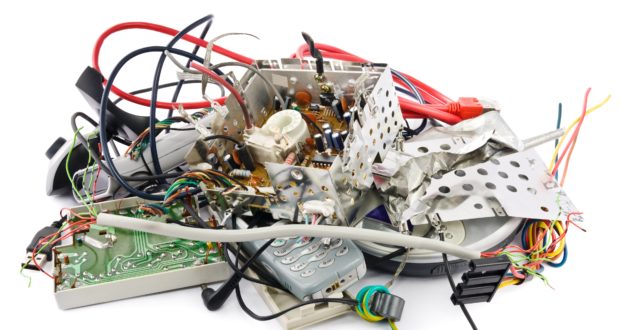Over the last quarter-century, the digital age has introduced consumers to an impressive array of new products. For millions of people, it would be very challenging to imagine daily life without smartphones, laptops and tablets. Unfortunately, with this technological progress has come the problem of e-waste, a term used to describe the discarded remains of electronic gadgets and devices. Though they may not receive much in the way of public attention, there is reason to be troubled at the growing mounds of electronic junk piling up around the globe.
Defining E-Waste
Ever wonder what’s inside your laptop or TV? The answer is probably a bit more disconcerting than you might think, as these products harbor potentially dangerous substances such as lead, mercury and arsenic. Other types of chemicals and metals included in these items are nickel, gold, silver, beryllium, barium and cadmium.
Though these waste materials can easily be harmful to human health, consumers generally don’t face much of an exposure risk. These elements are positioned well inside such devices, with one or more layers of surrounding material keeping them firmly in place. Unfortunately, many old and banged up electronic products wind up deteriorating on landfills or on city streets, allowing hazardous chemicals to escape and invade the local ecosystem.
Studying the Issue
There is certainly no shortage of digital junk scattered across the planet; the United Nations University estimates that a staggering 45 million tons of computers, copy machines, televisions, cell phones and other electronic goods are thrown away each and every year. Consequentially, this has lead to the appearance of e-waste dumps in countries such as China and Ghana, complete with mounds of electronic garbage.
A 2011 study shed light on the possible public health risks posed by e-waste. Researchers from China’s Zhejiang University examined the effects of this pollution on human cells, which were grown inside of a laboratory. When subjected to aerial pollutants commonly emitted by castoff digital devices, the cells responded by displaying clear signs of both inflammation and stress. In addition, the authors also noted that the cells’ DNA sustained noticeable damage.
These findings did not conclusively prove that e-waste exposure negatively affects human health. However, the researchers contend that the study did indicate that e-waste could be damaging to the body. Cancer and cardiovascular disease, two chronic and deadly conditions, are often preceded by DNA damage and inflammation.
Seeking a Solution
The problem of e-waste doesn’t appear to be going away anytime soon. In December 2013, the United Nations released a report predicting that the piles of rotting digital goods will only grow larger. The UN study estimated that from 2012 to 2017, worldwide e-waste would increase from 48.9 to 65.4 million metric tons. To put this in proper perspective, the weight from this additional junk is equal to about 200 Empire State Buildings or 11 Great Pyramids of Giza.
The biggest contributors to the world’s electronic trash heaps were the United States and China, which in 2012 produced 9.4 and 7.2 million tons respectively. The authors suggested that the reason for the US’s large volume of waste might be a result of its high production levels of electronic gadgets. Once these items are no longer useful, they need somewhere to go, which often means that they end up occupying space in landfills. This theory might also help explain why cell phones were found to be the top source of e-waste in the United States.
Aside from documenting the growing scope of this problem, the research team also offered a potential solution. The authors suggested that the creation of trade codes could be used to better track and manage electronic products.
 Natural Knowledge 24/7 Educate yourself with nutrition, health and fitness knowledge.
Natural Knowledge 24/7 Educate yourself with nutrition, health and fitness knowledge.






